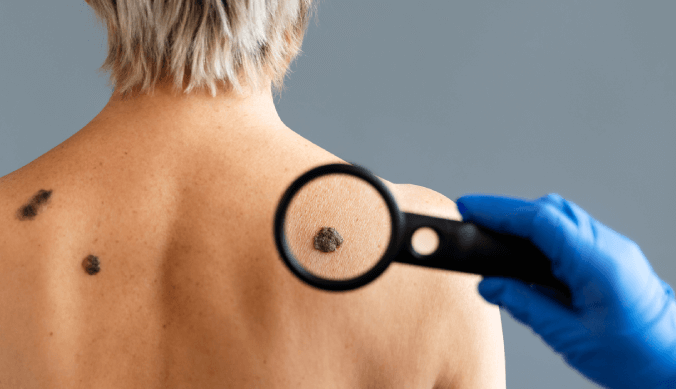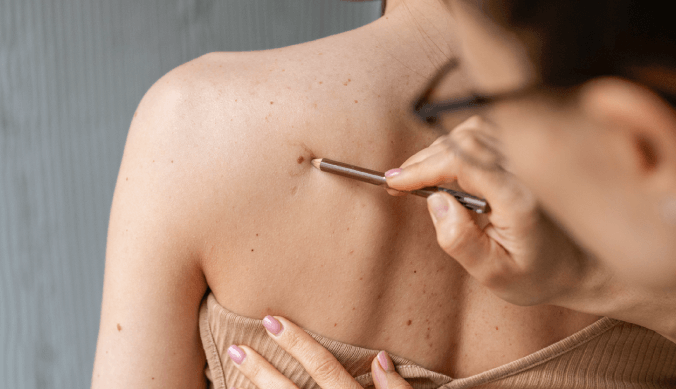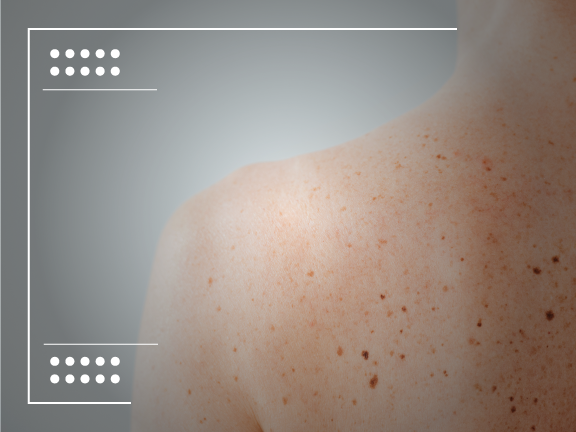Six Questions to Ask If You Have Melanoma
The anxiety and worries that come with a melanoma diagnosis may be overwhelming. It might be beneficial to learn as much as possible about melanoma. Write down all of your questions as you learn more about the condition and your diagnosis, and bring them to your next doctor’s appointment.
When a patient is first diagnosed, they frequently ask the following questions.
What Type or Subtype of Melanoma Do I Have?
Melanoma skin cancer develops in cells in the skin called melanocytes. Melanoma skin cancer is also known as malignant melanoma and cutaneous melanoma. Cutaneous refers to the skin.
Melanoma comes in a variety of forms. The various categories are typically handled similarly.
Melanoma can have several forms, including:
Superficial spreading melanoma
Melanoma that spreads superficially grows outwardly rather than downwards into the skin.
Melanoma of this kind is the most prevalent. This kind of melanoma affects 60 to 70 percent of patients with melanoma (60 to 70 percent). It is most commonly detected in adults between the ages of 30 and 50.
It can appear on any part of the body. However, it is more frequent in the middle area of the body in men (the trunk). It is particularly frequent on the legs in women.
Nodular melanoma
Melanoma that is nodular grows into the deeper layers of the skin. They have the ability to expand swiftly. With this form of melanoma, a raised region on the skin surface is common.
Melanoma of this kind is the second most prevalent. This kind accounts for 15 to 30 percent of all melanomas (between 15 and 30 percent). People in their 50s are the most likely to be diagnosed with it. It can appear anywhere on the body.
Lentigo maligna melanoma
These melanomas arise from lentigo maligna, or Hutchinson’s melanotic freckle, which are slow-growing colored patches of skin.
The lentigo maligna is a flat lentigo that develops outwardly in the skin’s superficial layers. It might get larger over time and alter shape or color. It starts to develop down into the deeper layers of the skin and may produce lumps if it becomes lentigo maligna melanoma (nodules).
This kind accounts for 5 to 15 percent of all melanomas (5 to 15 percent). It affects mostly adults over the age of 60. They are particularly frequent on the face and occur in regions of skin that receive a lot of sun exposure. They are also more frequent in those who have spent time in the military.
Amelanotic melanoma
Amelanotic denotes the absence of melanin. Melanin is a pigment that is dark in color. Amelanotic melanomas, unlike other melanomas, are frequently red or skin-colored rather than dark.
Acral lentiginous melanoma (see below) is an example of an amelanotic melanoma, which lacks color.
This form of melanoma is quite uncommon. This kind accounts for around 8 out of every 100 melanomas (8 percent). Because of their lack of color, they might be difficult to identify. They might be confused for other skin problems.
Acral lentiginous melanoma
Acral lentiginous melanoma is most commonly observed on the palms of the hands and soles of the feet, as well as around the big toe. It can also develop beneath the nails. It affects the feet far more frequently than the hands.
This kind is uncommon. This kind affects 5 to 10 persons out of every 100 who are diagnosed with melanoma (5 to 10 percent). However, it is the most prevalent kind of melanoma in those with dark skin.
What Are My Treatment Options?

Your treatment depends on:
- where your cancer is
- how far it has grown or spread (the stage)
- your general health and level of fitness
The depth of the melanoma in the skin determines how likely it is to return and spread. This information is used by doctors to determine what stage of melanoma you have.
Melanoma that hasn’t spread is treated mostly with surgery.
Treatment by Stage
Melanoma in situ (stage 0)
The most common therapy is surgery. Melanoma is diagnosed by removing the abnormal skin and a small patch of surrounding skin. A second procedure may be required to remove a greater region of healthy tissue around the melanoma. A broad local excision is the term for this procedure. This is all the therapy you’ll need if the physicians are confident they removed enough tissue.
Surgery can leave scars, and some people are not healthy enough to have surgery. Instead of surgery, you might receive therapy with imiquimod cream. Over a period of weeks, you apply imiquimod to the afflicted region.
Alternatively, your doctor may recommend that you have regular ultrasound examinations of your lymph nodes to see whether the cancer has returned.
Stage I and II
Melanoma in stages I and II is an early malignancy. The cancer is limited to the skin and has not migrated to other organs. The most common therapy is surgery.
After a melanoma diagnosis, a second procedure is frequently performed to remove a greater region of healthy tissue around the tumour (a wide local excision).
If your physicians are certain that they removed enough tissue, this is typically all the therapy you’ll need for most stage A melanomas.
Stage III
Cancer cells have progressed to the lymph nodes nearest to the melanoma or to a region between the tumor and the lymph nodes in stage III melanoma skin cancer.
After being diagnosed with melanoma, you will undergo surgery to remove additional tissue from the affected location (wide local excision).
Satellite or in-transit metastases are melanoma spreads that extend away from the original tumor to neighboring lymph nodes, depending on their distance from the melanoma. The most common therapy is surgery.
Stage IV
The cancer has progressed to other regions of the body, such as the liver, at stage IV. Advanced melanoma is another name for it.
To help manage the malignancy and its symptoms, you may get one or more of the following treatments:
- surgery
- targeted cancer drugs
- immunotherapy
- radiotherapy to specific sites of melanoma spread
- injecting a drug directly into the melanoma (intralesional therapy)
- chemotherapy directly into the leg or arm where the melanoma is
- chemotherapy combined with an electric current (electrochemotherapy)
- chemotherapy
Is It Likely That the Melanoma Has Spread?
Melanoma is the worst form of skin cancer. It might be a new spot or a variation of an existing mole or freckle. If skin cancer is detected early, almost 95 percent% of cases may be effectively treated.
Melanomas can spread to other areas of the body if left untreated, and they may not be treatable, so consult your doctor as soon as you see any changes in your skin.
What Steps Can I Take To Reduce the Risk of Developing a New Melanoma or Other Type of Skin Cancer?
The majority of patients who are treated for early melanoma do not get the illness again. Regular check-ups are required if there is a likelihood that the melanoma has spread to other regions of your body.
Your doctor will determine how frequently you need to see him or her — everyone is different. If you don’t have any more troubles, they’ll become less common.
After melanoma treatment, it’s critical to restrict your exposure to UV radiation from the sun. During sun protection periods, a mix of sun protection measures (clothing, hat, shade, sunscreen, and sunglasses) should be employed (whenever UV index levels are forecast to be three or above).
Your biological family members may be at a higher risk of acquiring melanoma and other skin cancers because they have comparable features. Spending less time in the sun and combining sun protection techniques during sun protection hours might help them lower their risk.
It’s critical to keep an eye on your skin on a frequent basis, and if you detect any changes or swollen lymph nodes around the site of your cancer, contact your doctor as soon as possible.
What Clinical Trials Are Available for Me? How Do I Find Out More About Them?

Massive Bio specializes in finding advanced clinical treatments for every melanoma skin cancer type. If you’ve been diagnosed with any of the following melanoma subtypes, we’re here to help. If you don’t know which type of melanoma cancer you have, that’s okay. Additional testing can help you determine your exact diagnosis.
- Squamous Cells
- Basal Cells
- Melanocytes
- Malignant Melanoma
- Cutaneous (Skin) Lymphoma
- Merkel Cell Carcinoma
- Kaposi Sarcoma
- Skin Adnexal Tumors
- Benign Tumors
- Seborrheic Keratoses
- Hemangiomas
- Lipomas
- Warts
Sources:
https://www.betterhealth.vic.gov
https://www.cancerresearchuk.org












